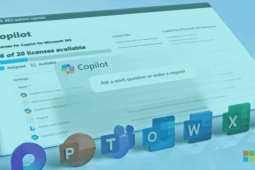Benefits of Microsoft Teams in Healthcare: Transforming Patient Care Through Digital Collaboration

Having the right digital tools can make all the difference in providing quality patient care. Microsoft Teams has emerged as a game-changer for healthcare organizations, offering a secure and unified platform that brings together communication, collaboration, and workflow management. The benefits of Microsoft Teams in healthcare settings are vast, touching everything from day-to-day operations to long-term patient outcomes.
This cloud-based platform helps doctors, nurses, and administrative staff work together more effectively while maintaining the security standards for handling sensitive patient information. As healthcare continues to evolve with more remote care options and digital solutions, Microsoft Teams provides the necessary foundation to adapt and thrive in this changing landscape.
Streamlining Communication Across Healthcare Teams
One of the most important benefits of Microsoft Teams is how it brings together different communication methods in one secure place. Healthcare workers can use instant messaging for quick questions, video calls for virtual patient visits, and voice calls for urgent matters – all without switching between different apps.
For busy hospitals and clinics, Teams creates dedicated channels where specific departments or care teams can share updates and information. This means that emergency room staff can have their own space separate from cardiology or pediatrics, making it easier to find relevant information quickly.
The platform also allows for organization-wide announcements, ensuring that important updates reach everyone who needs them. During health emergencies or when protocols change, this feature becomes especially valuable, as administrators can quickly distribute critical information to frontline workers.
By centralizing communication, Teams reduces the chances of important messages getting lost in overflowing email inboxes or paper notes. This improvement in communication flow directly impacts patient care by ensuring that everyone involved has access to the most current information.
Enhancing Patient Care Through Virtual Appointments
The ability to conduct virtual appointments stands out among the key benefits of Microsoft Teams in today’s healthcare environment. The platform’s secure video conferencing capabilities allow doctors to connect with patients remotely, expanding access to care for those who have mobility issues, live in rural areas, or cannot visit the clinic for other reasons.
Virtual appointments through Teams include features like waiting rooms, which mimic the traditional office visit experience while maintaining patient privacy. Doctors can share their screens to review test results, imaging studies, or educational materials directly with patients during the call.
Teams also integrates with scheduling tools like Bookings, making it easy for patients to find available appointment times and for staff to manage the virtual visit calendar. After appointments, providers can securely share follow-up instructions, prescriptions, or referrals through the platform.
For patients managing chronic conditions, regular virtual check-ins through Teams can improve monitoring without requiring frequent in-person visits. This convenience often leads to better treatment adherence and patient satisfaction while reducing the burden on healthcare facilities.
Securing Patient Data and Ensuring Compliance
In healthcare, data security isn’t just important—it’s essential. The benefits of Microsoft Teams include robust security features designed specifically for handling sensitive medical information. The platform offers end-to-end encryption, multi-factor authentication, and role-based access controls to protect patient data.
Teams can be configured to be compliant with major healthcare regulations like HIPAA in the United States and GDPR in Europe. This compliance means healthcare organizations can use the platform with confidence, knowing that patient privacy is protected according to legal standards.
Administrators can set policies that control who can access different types of information, ensuring that patient records are only available to authorized personnel. The platform also provides detailed audit logs that track who accessed what information and when, creating accountability and transparency.
Data retention policies can be customized to meet specific healthcare requirements, automatically archiving or deleting information after appropriate time periods. These security features work together to create a protected environment where healthcare professionals can collaborate freely while maintaining patient confidentiality.
Integrating with Electronic Health Records (EHR)
In 2023, Microsoft Teams had over 320 million users.
One of the standout benefits of Microsoft Teams is its ability to integrate with existing healthcare systems, particularly Electronic Health Records (EHR). This integration creates a seamless workflow where providers can access patient information directly within the Teams environment.
When connected to EHR systems, Teams allows healthcare workers to view patient charts, update notes, and check medication lists without having to log into separate applications. This reduces the time spent switching between systems and decreases the risk of transcription errors.
During team meetings or case discussions, providers can pull up relevant patient data in real-time, allowing for more informed decision-making. The ability to share this information securely with specialists or consulting physicians improves coordination of care across different departments or facilities.
Some implementations even allow for automated alerts from the EHR to be sent directly to Teams, notifying providers about critical lab results or changes in patient status. This integration transforms Teams from a simple communication tool into a comprehensive clinical workspace that supports the entire care process.
Reducing Physician Burnout Through Workload Management
Healthcare provider burnout is a serious concern in modern medicine, but the benefits of Microsoft Teams include several features that can help address this issue. By streamlining workflows and reducing administrative burden, Teams helps physicians focus more on patient care and less on paperwork.
The platform’s task management capabilities allow teams to assign, track, and prioritize work. This visibility helps distribute responsibilities evenly and ensures that important tasks don’t fall through the cracks. For physicians managing multiple patients, this organization can significantly reduce stress.
Teams also minimizes the need for in-person meetings through its virtual collaboration spaces. This saves valuable time that providers can instead dedicate to patient care or personal well-being. The reduction in travel between different hospital buildings or campuses for meetings adds up to significant time savings over weeks and months.
Improving Care Coordination Across Departments
Effective patient care often requires coordination between multiple specialists and departments. The benefits of Microsoft Teams shine in this area by creating virtual spaces where entire care teams can collaborate around individual patients.
Teams allows for creating dedicated channels for complex cases, where all relevant providers—from primary care physicians to specialists, nurses, therapists, and social workers—can share updates and coordinate treatment plans. This ensures everyone is working with the same information and toward the same goals.
The platform’s persistent chat feature maintains a record of all discussions, so team members can quickly catch up on developments even if they missed earlier conversations. This historical record proves invaluable when tracking a patient’s progress over time or when bringing new providers into the case.
File sharing capabilities allow test results, imaging studies, treatment protocols, and educational materials to be stored in one accessible location. This eliminates the need to search through different systems or request information from other departments, speeding up decision-making and treatment implementation.
Enhancing Medical Education and Training
The educational benefits of Microsoft Teams extend to medical training and continuing education for healthcare professionals. The platform creates virtual learning environments where medical knowledge can be shared efficiently across organizations.
Teams supports live broadcasts of surgical procedures or medical demonstrations, allowing students and practitioners to observe techniques without crowding operating rooms. These sessions can be recorded and stored for future reference or for those unable to attend live events.
Virtual grand rounds and case presentations through Teams enable healthcare professionals from different locations to participate in educational discussions. This widens access to expertise and allows for more diverse perspectives than would be possible with only in-person attendees.
The platform facilitates mentorship relationships by making it easy for experienced providers to connect with and guide those newer to the field. Screen sharing, whiteboard features, and document collaboration tools create interactive teaching experiences that enhance learning outcomes.
Teams provides an efficient way for healthcare organizations to disseminate new protocols, treatment guidelines, or research findings to all relevant staff members, ensuring that clinical practice remains current with the latest evidence-based approaches.
Streamlining Administrative Processes
In the third quarter of 2024, approximately 10 million downloads of the Microsoft Teams mobile app occurred in the combined regions of North and Latin America. Beyond clinical applications, the benefits of Microsoft Teams extend to the administrative side of healthcare. The platform helps streamline the many paperwork-heavy processes that support patient care but often consume valuable time.
Staff scheduling becomes more efficient with tools like Shifts, an app integrated within Teams that allows managers to create, update, and share schedules. Team members can request time off, swap shifts, or volunteer for open slots directly through the platform, reducing the administrative overhead of schedule management.
Teams simplifies the onboarding process for new staff by providing a central location for training materials, policy documents, and procedural guides. New employees can easily find resources and connect with colleagues for questions, accelerating their integration into the organization.
Committee work and governance activities benefit from Teams’ meeting and document collaboration features. Board members, quality improvement committees, and administrative leaders can work together on policies, reviews, and planning without requiring everyone to be physically present for every discussion.
By digitizing and centralizing these administrative functions, healthcare organizations can reduce paperwork, minimize errors, and free up staff time for activities that more directly impact patient care.
Adapting to Future Healthcare Needs
As healthcare continues to evolve, the benefits of Microsoft Teams include the platform’s ability to adapt and grow with changing industry needs. Regular updates and new features ensure that Teams remains relevant even as healthcare delivery models transform.
The platform’s flexibility supports emerging care models like hospital-at-home programs, where patients receive acute care in their own homes with remote monitoring and virtual check-ins from the care team. Teams provides the secure communication infrastructure needed to coordinate these complex care arrangements.
As artificial intelligence and machine learning become more integrated into healthcare, Teams is positioned to incorporate these technologies. The platform already supports AI-powered features like real-time transcription of meetings and is likely to expand these capabilities in ways specifically beneficial to healthcare.
Microsoft’s commitment to interoperability means that Teams will continue to work with new healthcare technologies as they emerge. This future-proofing helps healthcare organizations make technology investments with confidence, knowing that their collaboration platform will support rather than hinder innovation.
By providing a flexible foundation for digital collaboration, Microsoft Teams helps healthcare organizations not only meet today’s challenges but prepare for tomorrow’s opportunities in delivering exceptional patient care.
Ready to take your unified communications from headache to hassle-free?
No throwing darts at proposals or contracts. No battling through the back-end. No nonsense, no run-around.



